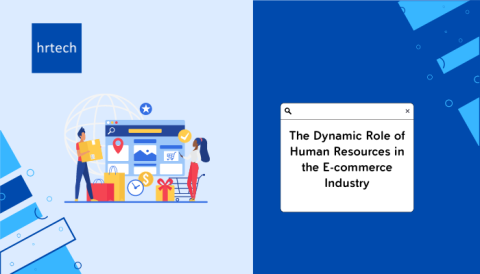Discover the different types of HR applications that can help streamline HR processes, improve employee engagement and increase productivity. Read on for more!
by Sanika Sarmalkar, Junior Consultant – Digital HR, hrtech

HR applications have revolutionized the way organizations manage their HR operations. The use of HR technology has made it easier for HR professionals to manage employee data, streamline HR processes, and increase productivity. In this blog, we’ll explore the different types of HR applications
Types of HR Applications:
There are three main types of HR applications:
- Strategic HR
- Core HR
- Workforce Management
1. Strategic HR:
Strategic HR applications are designed to support HR functions related to strategic planning, talent management, and employee engagement. These applications provide functionalities such as performance management, succession planning, and learning management. Some of the popular HR technology applications for strategic HR are entomo, Synergita, edCast by Cornerstone
2. Core HR:
Core HR applications are the backbone of HR operations. They provide functionalities such as employee data management, payroll processing, benefits administration, and compliance management. However, with the rise of technology and its impact on the workforce, it’s important to look beyond traditional Core HR systems and consider tools that can help enhance other HR functions such as recruitment, employee engagement, and employee wellness.
Some of the popular HRMS software are ADP, SAP SuccessFactors, Zoho, factoHR, GreytHR, PocketHRMS, sumHR, ZingHR, BambooHR
Recruitment Tools: The right recruiting tools can make all the difference in streamlining the hiring process and identifying top talent. Some of the popular recruiting tools in the market include RippleHire, Xobin, RChilli, Incruiter. These tools offer functionalities such as applicant tracking, interview scheduling, and candidate relationship management to help HR teams manage the hiring process more efficiently.
Employee Engagement Tools: Employee engagement is critical to the success of any organization, and HR Technology has made it easier to measure and improve engagement levels. Some of the popular employee engagement tools in the market include Synergita and entomo. These tools provide functionalities such as pulse surveys, employee feedback, and sentiment analysis to help HR teams identify areas of improvement and take action to improve engagement levels.
Employee Wellness Tools: Employee wellness has become a top priority for many organizations, and HR technology can play a significant role in supporting employee wellness initiatives. Some of the popular employee wellness tools in the market include Neurowyzr and Amber by InFeedo. These tools provide functionalities such as health assessments, wellness challenges, and personalized coaching to help employees stay healthy and engaged.
3. Workforce Management:
Workforce Management applications help organizations manage their workforce more efficiently. These applications provide functionalities such as time and attendance tracking, scheduling, and leave management. Popular HR technology applications for Biotemp by Timecentral, Logical Commander, SalaryBox.
Check out HR Tech Case Studies and learn how global organizations leverage HR Technology tools to achieve their goals and drive business productivity.
Benefits of HR Applications:
HR applications provide several benefits to organizations, such as:
-
Improved efficiency: HR applications automate several HR processes, reducing the time and effort required to complete these tasks manually.
-
Reduced errors: HR applications provide accuracy and consistency in HR operations, reducing the chances of errors.
-
Increased compliance: HR applications help organizations comply with legal and regulatory requirements related to HR operations.
-
Better decision-making: HR applications provide insights and analytics that help organizations make data-driven decisions related to HR operations.
Challenges and Limitations:
While HR applications provide several benefits, there are also some challenges and limitations, such as:
-
Cost: HR applications can be expensive to implement and maintain, especially for small and medium-sized businesses.
-
Complexity: HR applications can be complex, requiring specialized skills and training to use them effectively.
-
Data security: HR applications store sensitive employee data, requiring robust data security measures to protect against data breaches.
About the Author:

Sanika Sarmalkar is part of the Digital HR Advisory & Consulting team at hrtech. With a Masters in HRM and a background in creative content writing, she is a HRTech evangelist who aims to encourage Enterprise HR Teams to adopt new-age HRTech solutions, and thereby enable their transition into becoming a Strategic HR Business Partner.
About hrtech:
Founded in 2018, hrtech is a Singapore-based HRTech Analyst firm dedicated to facilitating Workplace and Workforce Transformations that drive impactful Business and HR outcomes. Our ultimate vision is to empower HR professionals to transform their organizations by seamlessly integrating technology and human-centric approaches.
From our very beginning, we have been committed to building a TECH-DRIVEN and DATA-CENTRIC HR ECOSYSTEM that empowers organizations to achieve successful Workplace and Talent Transformations, while enabling HR teams to evolve into Strategic Business Partners.
At hrtech, we recognize the paramount importance of adapting to the ever-changing demands of the modern workplace. Our unique value proposition lies in automating and digitizing HR processes to initiate a transformative mindset shift. By embracing our ecosystem, organizations can leverage the power of technology to streamline operations, enhance Business and HR productivity and efficiency, elevate employee experiences, and unlock their full potential.
Our comprehensive ecosystem serves as a catalyst for the digital transformation of HR functions, enabling you to optimize efficiency, foster innovation, and cultivate a thriving workforce amidst constant change. To facilitate this transformation and drive organizational success, we operate through our four distinct verticals of Academy, Advisory & Consulting, Marketplace Solutions and Talent OnDemand.





